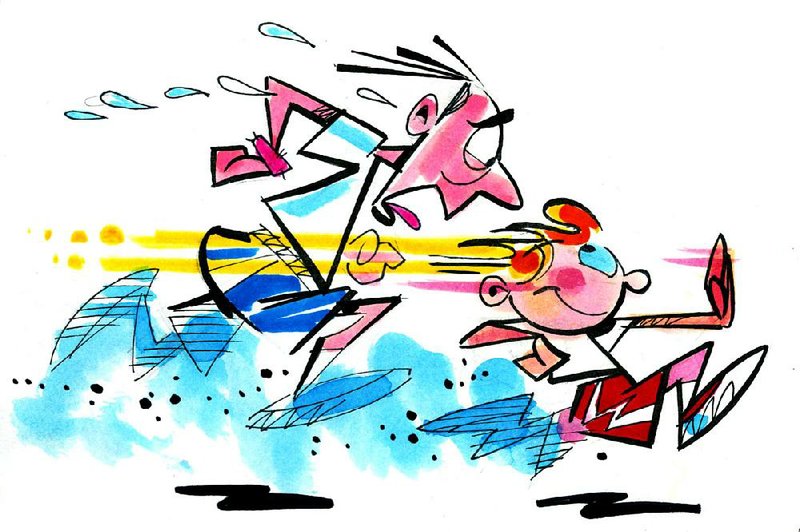Young runners are different from you and me. They have more speed. And to achieve that swiftness, they use certain leg muscles quite differently from runners older than 50 do, according to a new study of runners' strides at different ages.
The study also intimates that some older runners might be able to reinvigorate their flagging pace with the right type of strength training.
Science, competitive records and lived experience all show that runners slow with advancing age, even the great ones. For instance, the
world marathon record for men -- 2 hours, 2 minutes, 57 seconds -- was blazed by a 30-year-old, and is nearly an hour faster than the world record of 2:54:48 set by Canadian Ed Whitlock for the 70-75 age group.
He later set the record for the 80-85 age group with a 3:15:54 clocking that, although blisteringly fast by many standards, was more than 20 minutes slower than his septuagenarian self.
Little is known about the actual bodily underpinnings of declining times. But there have been hints. Past studies have found that human aerobic capacity declines in the 40s, dropping by about 10 percent per decade after that, even if people vigorously exercise. So serious 60-year-old runners will have more endurance capacity than sedentary people their age, but less than their 40- or 50-year-old selves.
However, lower endurance capacity does not automatically mean slower running speeds. Theoretically, with age, people could run at the same pace as they once did, although doing so would require using more of an already diminished endurance capacity -- meaning that it would feel more difficult.
But they don't. They slow down.
LESS ANKLE, MORE HIP
That fact intrigued Paul DeVita, a professor of kinesiology at East Carolina University in Greenville, N.C., and president of the American Society of Biomechanics. In 2000, he and his colleague Tibor Hortobagyi published a famous study showing that older people, when they walk, take shorter steps than younger walkers, and rely less on the muscles around their ankles and more on the muscles around their hips to complete each stride than do younger walkers.
DeVita suspected that a similar change in form might be occurring among runners. But there was little evidence to support that idea.
So for the new study, which was published Aug. 7 in Medicine & Science in Sports & Exercise, DeVita set out to learn more. He and his colleagues from Wake Forest University in Winston-Salem, N.C., and the U.S. Army Research Institute of Environmental Medicine in Natick, Mass., recruited 110 experienced, recreational runners 23 to 59 years old.
They invited the men and women to the Runners Clinic at Wake Forest and fitted them with reflectors designed to let sensors capture how they moved. Then, while the researchers filmed them, the volunteers ran repeatedly at their normal training paces along a track containing a device that could measure how forcefully their feet struck the ground.
The researchers integrated this data to create profiles of the runners' form, which they then compared by age.
The differences were striking. With each passing decade, the runners' stride length and preferred speed dropped about 20 percent.
Runners older than about 40 displayed much less activation of and power in the muscles of their lower legs, especially those around the ankle and in the calf. Consequently, DeVita and his colleagues found, these runners pushed off more weakly with each stride and did not rise as high as younger runners, a change in form that accelerated as runners reached their 50s.
The scientists did not see any accompanying increase in the activation of the runners' hip muscles, as they had seen in walkers. The older runners used their ankle muscles less but did not use other muscles more. Instead, they simply slowed down.
SELF-PROTECTION?
In many ways, this shift away from reliance on the lower leg muscles during running makes physiological sense, DeVita said. There is evidence, he said, that those muscles age earlier than do other muscles in the body, with connections between cells in those muscles and the nervous system faltering and the muscles' repair systems weakening earlier than in other muscles.
"Achilles tendon and calf injuries tend to increase" as runners get older, he noted, probably because those tissues become particularly fragile.
ActiveStyle on 10/12/2015

